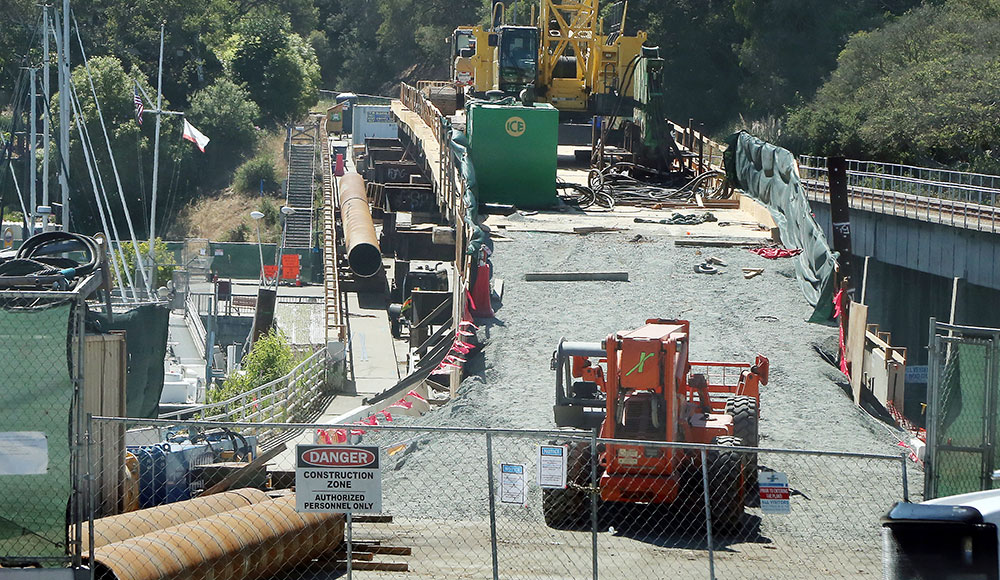The Santa Cruz City Council has pulled the plug on a proposed temporary pedestrian and bike path over the railroad trestle next to the Murray Street Bridge, voting unanimously not to move forward with the idea after staff warned of serious safety, liability and cost concerns.
The path had been floated as a short-term solution for Seabright and harbor businesses, many of which say they’ve seen double-digit revenue drops since the Murray Street Bridge was closed to all traffic for a multi-year seismic retrofit.
Instead, city leaders are now pinning their hopes on reopening the bridge to one-lane vehicle traffic and two-way pedestrian access early next year, while continuing to develop direct relief and other support for impacted businesses.
Public Works Director Nathan Nguyen and City Engineer Kevin Crossley told the council that, after months of work with the Regional Transportation Commission (RTC) and rail operator Progressive Rail, they could not recommend the temporary path for four main reasons:
- Seismic Risk—The underlying railroad trestle has been formally identified by the RTC as seismically deficient.
- Design Standards and Legal Exposure—The proposed temporary path would not meet the full engineering standards the city uses on permanent rail trail segments. City Attorney Tony Condotti said the city likely could not claim “design immunity” if someone were injured.
- Lighting and Personal Safety—The section between the harbor and 7th Avenue sits in a low trench with no existing ambient lighting, which
- Insurance and Cost to Taxpayers—
On top of that, staff estimated it would cost roughly $1.2 million to design and build the path, money that would have to be pulled from other projects.
Even if the city were willing to accept all these risks, there’s a property-rights barrier: Progressive Rail holds an easement over the corridor. In an Oct. 24 letter, the company declined to grant the right-of-entry needed for the city to build the path.
Mayor Fred Keeley blasted the operator as an uncooperative partner that has shown little interest in local needs, and said he expects the company’s stance to face pushback at the Regional Transportation Commission. But he acknowledged the city has limited legal leverage in the short term.
Councilmember Sonja Brunner moved to accept staff’s report and formally not go forward with the temporary pedestrian path; her motion was quickly seconded and then passed unanimously.
Several councilmembers stressed that the decision is not a signal that the city is walking away from Seabright and harbor businesses. They pointed to an earlier package of support measures adopted in August—including direct business assistance, marketing and outreach—and said those efforts would continue and could be refined based on feedback.
Business owners who spoke at the meeting described steep revenue losses and staff cuts since the closure and urged the city to “throw everything you can” at solutions. Councilmembers said they share the urgency to find solutions—but, at least for now, the temporary walking/biking path will not be one of them.












